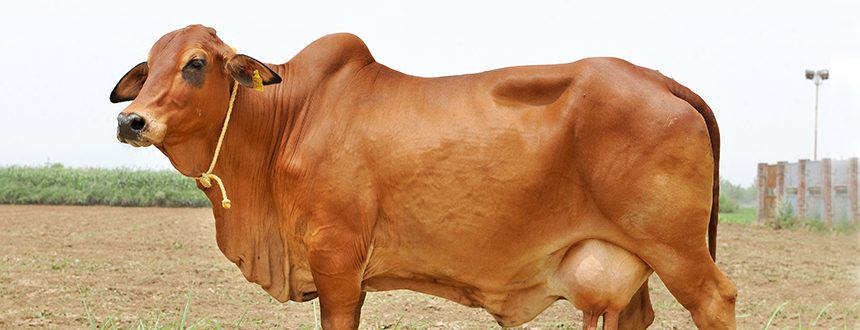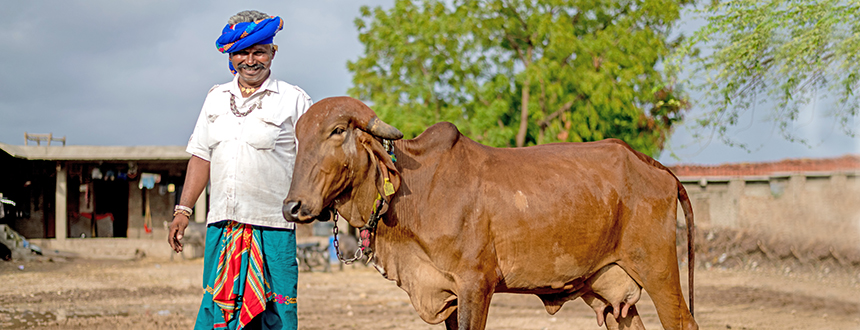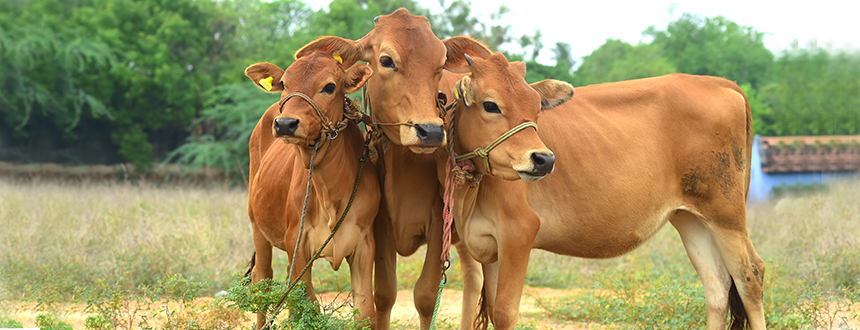Latest Sire Proofs
- BV and SSCR APLDA JCB cattle Dec 21
- BV and SSCR Banas mehsana Dec 21
- BV and SSCR HFCB cattle Dec 21
- BV and SSCR KMF HF cattle Dec 19
- BV and SSCR MSN mehsana Dec 21
- BV and SSCR SAG Murrah Dec 21
- BV and SSCR TCMPF JCB cattle Dec 21
- Service Sire Conception Rate Dec 21
Estimated Breeding Values – a brief explanation
1. Estimated breeding values reflect the true genetic potential or genetic transmitting ability of animals. They are estimated for individual animals based on performance records of their parents, sibs, progenies and their own after correcting for various environmental factors like herd (which gives an idea about the management under which the animal has performed), month/season of calving and month of milk recording (both of which provide an idea of how time effects performance), age at calving, etc. The performance of daughters are also corrected for the level of performance of their mothers.
When parents are selected based on their breeding values with high reliability, a faster genetic progress is expected in the resultant population. Estimating reliable breeding values is therefore becomes a critical component in any genetic improvement programme.
2. Breeding values are estimated for each trait viz. 305 day standard first lactation yield, fat yield, fat %, protein yield, protein %, service period, number of inseminations per conception, inter-calving period, etc.
3. Data used: Under National Dairy Plan I, 13 progeny testing projects are being implemented by various End Implementing Agencies (EIAs) for 5 major breeds (Pure HF, HFCB, JCB, Murrah and Mehsana). The animals under milk recording in these programmes are daughters born and registered out of test inseminations carried out in the project area. For recording 305 day standardized milk yield the EIAs engage official milk recorders in the project villages. The milk recorders go to the farmer’s doorstep on pre-decided date at a monthly interval both in morning and again in evening at the time of milking of animal. He uses a milk measuring jar for measuring volume of milk produced and enters the quantities of milk produced both in the morning and in the evening through an online data entry system - INAPH. The system has very robust validation mechanism for acceptance of data. The data thus entered is retrieved from the system and after standard data edits, it is used for breeding value estimation.
4. Data Analysis and presentation: A Test-day Random Regression model is used for breeding value estimation using standard open source software. Test day BVs obtained from analysis are converted to 305 day milk yield BVs using statistical methods. From raw data bull wise number of daughters and their standard lactation yield are calculated. The BVs are presented along with reliability estimates, number of daughters and their average standard lactation milk yield.
5. Interpretation of BV: A bull with +100 breeding value means on an average the daughters of the bull are having genetic capacity to produce 50 Kg more milk compared to the population of daughters of all bulls together. Higher the breeding value the bull has on an average it will have better daughters. A bull with negative breeding value means compared to other bulls tested, the daughters of this bull on an average have lower genetic capacity for milk production. BV should always be looked along with reliability estimate provided. The reliability estimates give the extent of error associated with BV estimate. For example, BV of +100 at 90% reliability means, actual BV is within range of +90 to +110 where as BV of +100 at 50% reliability means, actual BV is within range of +50 to +150.



